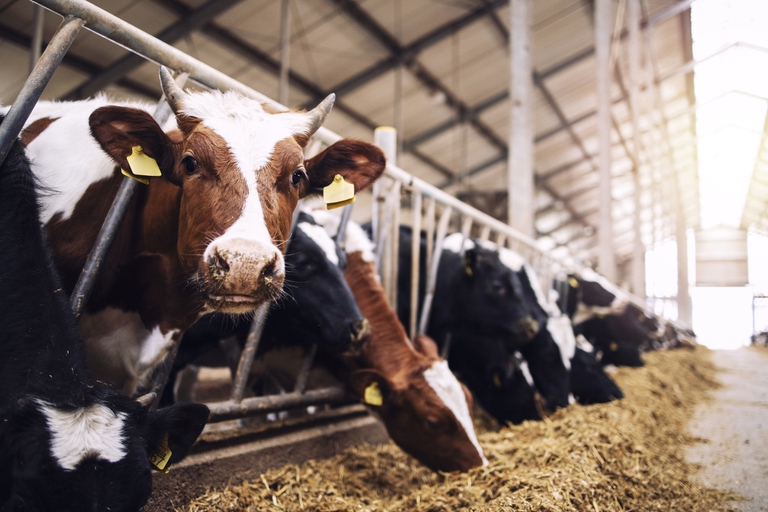https://www.lifegate.it/emissioni-metano-record
- |
- A new study on methane emissions into the atmosphere has been released:in the last five years they have grown at a record rate.
- Humans are responsible for two-thirds of methane emissions.
- In 2021, the Global methane pledge was signed, which plans to reduce methane emissions by 30 percent by 2030.
In the short term, gas methane is considered the most effective lever to respond to energy demand, with the aim of supporting the transition towards renewable sources by 2030.This strategy was also reiterated by Eni, which recently he started a new methane production site, despite the current climate emergency, exacerbated by 2023, the year hottest ever recorded in the pre-industrial era (while 2024 is preparing to break the new record).The reason given is: economic nature:methane represents a less expensive solution that allows us to preserve the current energy system, reducing changes to a minimum.However, on September 10, 2024, new scientific data raised strong concerns about the impact of methane in the atmosphere.
A study conducted by Global Carbon Project, an organization that seeks to quantify global greenhouse gas emissions and their causes, with the contribution of 66 research institutes found a alarming increase of the concentrations of this gas in the atmosphere: since 2007, concentrations have grown significantly, achieving a record rate of increase in the last five years, since measurements began in the 1980s.This situation is critical, since methane is the second most significant greenhouse gas after carbon dioxide (CO2), and contributes to about a third of global warming compared to the pre-industrial era.The data suggests that average global warming was 1.2 degrees Celsius, of which about 0.5 was attributable to methane, as reported by the Intergovernmental Panel on Climate Change (IPCC).
Although methane has a shorter atmospheric life cycle than CO2, lasting approximately nine years in the atmosphere, its heating power is far superior:over 80 times that of CO2 over a period of twenty years, and approximately 30 times over a horizon of one hundred years.

Reducing methane emissions is urgent
Although methane is considered a “cleaner” fossil fuel than coal and oil, eliminating its atmospheric emissions would bring immediate and tangible benefits.Yet, the political will to pursue this path still appears weak.The large multinationals in the fossil fuel sector, such as Eni, maintain that methane gas is essential to compensate for the structural deficiencies of renewable energy.These subjects argue that we will be able to continue to exploit methane until 2030, when a peak in use is expected, and then gradually reduce its importance in favor of cleaner sources.
These projections might seem realistic in a context of climate stability, but climate science teaches us that atmospheric conditions are changing unpredictably. The only certain fact is that global warming is increasing, and with it the extreme weather events, the timing and intensity of which are increasingly difficult to anticipate.
Reduce greenhouse gas emissions, including methane, it is an urgent need to mitigate the effects of climate change.While CO2 has a long-lasting impact on the atmosphere, it is methane that can deliver immediate results if addressed now.
What are the main sources of methane emissions?
About 65 percent of global methane emissions are anthropogenic (in 2020, human activities emitted between 370 and 384 million tons of methane), resulting from activities such aslivestock farming, the extraction of coal, the production and distribution of natural gas, rice cultivation and organic waste management in landfills.Among these, agriculture, in particular livestock farming and rice fields, is responsible for 40 percent of emissions, while fossil fuels contribute 36 percent and landfills 17 percent.Therefore, emissions from fossil fuels have now reached levels comparable to those produced by livestock farming.
The remaining 35 percent of emissions come from natural sources, primarily from the decomposition of organic matter in wetlands, rivers, lakes and waterlogged soils.Tropical wetlands are among the largest natural emitters, but even permafrost, which is melting due to global warming, is starting to release increasing amounts of methane.
Emissions in line with +3°C by 2100
Uncontrolled methane emissions represent a serious threat.Recently observed atmospheric concentrations are aligned with climate scenarios that predict rising temperatures up to 3 degrees centigrade by 2100.
To keep global warming below 2 degrees, as established byParis Agreement of 2015, it is essential to drastically reduce methane emissions.THE'The goal is to halve emissions of this gas (about 45 percent) by 2050.This is an ambitious but achievable goal, the study says.
Furthermore, in the oil and gas sector, the International Energy Agency (IEA) he estimated That 40 percent of emissions could be reduced without incurring net costs.Even in agriculture, we can achieve significant reductions through the use of feed additives, which reduce emissions from ruminants, and practices such as intermediate drainage of rice fields.The methane produced by landfills, however, can be captured and reused to produce energy or heat.
In 2021, many countries have signed the Global methane pledge, committing to reduce methane emissions by 30 percent by 2030.However, despite these commitments, methane emissions continue to grow, indicating that more coercive actions are needed to force the largest emitters to reach the established target.
